Located in the heart of central London and bordered by bustling Camden and stylish Marylebone, Regent’s Park might be the last place you would expect to find a beekeeper, but it is exactly where you will find Toby Mason
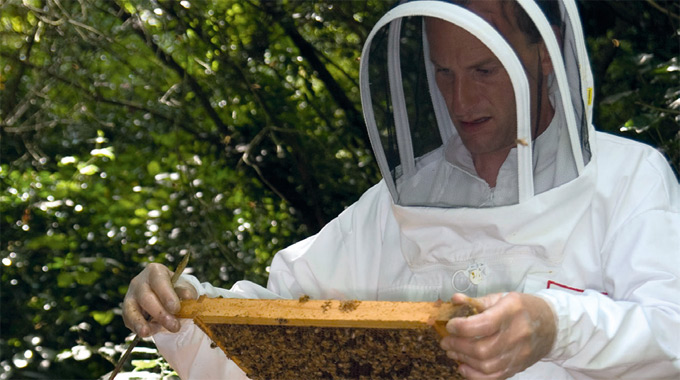
Nestled in a secret location within the capital’s most popular park and with the distant hum of traffic in the background, London’s ‘buzziest’ man goes about his his sticky business – beekeeping. Creating a more determined hum, Toby Mason’s grist of bees labour away unsuspectingly creating some of Britain’s tastiest honey.
London’s Regent’s Park is not the first place you might expect to find a professional beekeeper and a collection of hives, home to a family of 40 colonies of hardworking bees. But it is the ideal place for bees to produce delicious honey.
Known as the ‘jewel in the crown’, Regent’s Park is London’s largest outdoor sports area, covering nearly 100 acres. Like most of the other Royal Parks, Regent’s Park formed part of the vast chase appropriated by Henry VIII. Marylebone Park, as it was then known, remained a royal chase until 1646. It was John Nash, architect to the crown and friend of the Prince Regent, who developed Regent’s Park as we know it today. It remains a firm favourite of Londoners and visitors alike, and, today, is most famously associated with London Zoo. It is also home to a vast open parkland covered in wild flowers, and interspersed with formal, landscaped gardens.
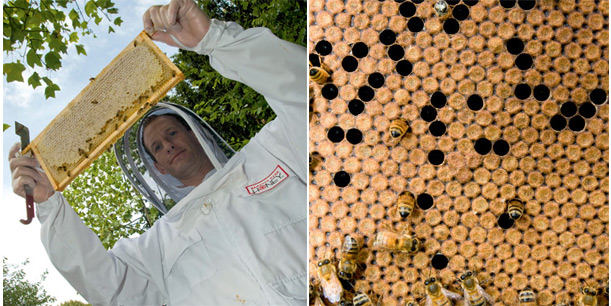
This diversity provides a wonderfully varied feeding ground for Toby’s bees. “There is no greater park in the world – with its rare and unusual breeds, open and closed spaces, smart and scruffy bits, sporty and lazy bits. It is a wonderful home for bees because it has so many flowers and trees, and, like most city parks, it is pesticide free.”
This variety means that the Regent’s Park bees typically stay within a three-mile radius. And the combination of plants and trees within that radius results in very tasty honey. City honey, says Tony, has more flavour than many countryside-produced blends: “Here in the Capital, the bees have a phenomenal amount of food: trees, brambles and wild flowers. There are fewer wild flowers in the countryside, as they are often ‘sprayed’ by farmers. So, city-based beekeepers tend to harvest better-tasting honey.”
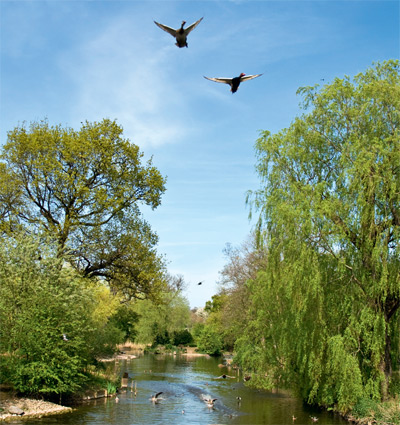
This could be true, as farmers favour monocropping. And although monocropping makes for a beautiful British countryside… (imagine bright yellow rapeseed fields unfolding across an undulating landscape for as far as your eye can see) it also makes for bland honey. Not only is the honey tastier, Toby believes that the yields in the city are higher too, because the bees do not have to travel too far to find food. “There are more than eight lime trees within 100 metres of my hives,” he explains.
There is real a ‘hive’ of activity around city-based beekeepers. In the last five years, the British Beekeepers Association has almost doubled its membership. “Even if you only have a small balcony, flat roof or public place, such as a cemetery, you can harvest tasty honey.”
The flavour of honey is a distillation of all the flowers that the bees have been visiting; some honeys have strong flavours, others have a delicate taste. The taste depends on the location of the hive. Explains Tony: “If, for a radius of three or four miles there is a single crop, then that is all that the bee gets to eat, resulting in a delicate, slightly bland flavour. If your bees are feeding on privet, then your honey will be bitter. Lime trees make for a light and floral flavour.
When you taste Regent’s Park honey, you might pick up on grapefruit, elderflower, lime, mint and rose flavours, for example. The season also impacts on taste. When it nears the end of summer the honey is dark and more savoury.”
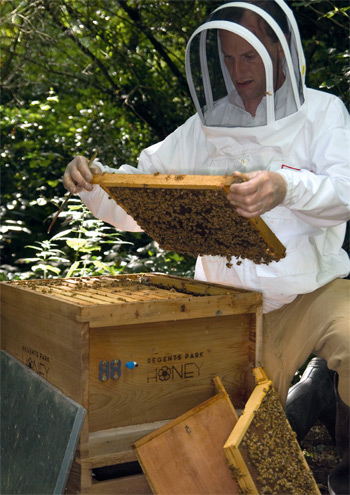
The taste can also vary from colony to colony. There are over 40 colonies spread over four sites in secret locations around Regent’s Park. The volume of honey from this many colonies means that Tony is, in fact, a bee farmer rather than a beekeeper. But he says he is somewhere between the two. (A bee farmer is a professional beekeeper, whereas the term beekeeper is used to describe an amateur with a passion for beekeeping.) “My role is to ensure the bees are healthy and happy – if the hive is the right temperature and the bees are going about their work, I know they are happy” explains Tony who is very passionate about his job. Toby “fell in love” with beekeeping when he attended a beekeeping course. “As I lifted the roof off the hive, I was fascinated by this completely different world. It initially seemed like a crazy chaos, but within minutes I realised it was very structured, that there were thousands of little beasts all doing their work. In addition to that there is this amazing sound and smell – all my senses were attacked.”
Tony describes the sound as a roaring. “It is the sound of vitality and energy, and it smells warm and clean. Imagine the smell of a florist, but where florist shops are cold, this smell is warm and sweet, unfamiliar but delicious.”
This sweet smell might seem unfamiliar to many now, but the promise of a satisfying hobby and delicious honey is set to capture a new breed of British beekeeper, and turn what might have easily become a sight of the past into a range of modern hives and city honeys for the future.
Related articles


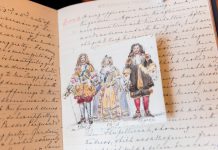



 © 2024
© 2024